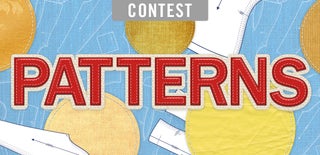Introduction: Make a Pattern From Your Favorite Shirt.
Anyone can make a pattern out of a flattering outfit. It is much easier than working with commercial patterns that may need a lot of adjustments because we come in different body types and shapes and sizes. I personally have to make many alterations that I find it cumbersome. I just want to sew and make a garment that fits well without spending too much time understanding what adjustments I need to make. I am not super precise so I find this method of creating a pattern from ready to wear clothes, the best method for beginners. I have one shirt that I liked the fit and the design and will use this piece to make a tutorial.
The best part is that you don't really have to buy fabric, you can look in your closet or in the pile of clothes that your are ready to donate or not excited about and repurpose them using your favorite patterns! This is a very affordable not to mention eco-friendly way to repurpose a garment.
You will need for this project:
- Lots of thin pins
- A foam poster board
- Your favorite shirt or outfit that you want to make a pattern
- Tracing paper or craft paper
- Sharpie markers
- Quilter's rulers or a long ruler
- Scissors for paper
Step 1: Fold Your Outift in Half and Pin It on Foam Board:
The goal is to trace the shape of the piece you want to copy with small pins. By micro-pinning you are leaving a nice trail of tiny dots that it will be so easy to trace with your sharpie marker and follow the natural curves and seams of your outfit.
Inspect your outfit first and notice seam allowances, shapes, and design details. You want to get an accurate read of the outfit you want to copy.
- Place a foam board on top of a flat surface. On top of the foam poster board, place tracing paper.
- Draw a straight line with your sharpie markers to make sure that you are working straight.
- Grab your shirt or outfit that you want to trace. Fold it perfectly in half. Place on top of the foam board your tracing or craft paper.
- Carefully follow the shape of your outfit and pin around. Be careful not to distort the outfit. You want to stay as straight and flat as possible to "read" your piece and get an accurate pattern.
- You can use the same paper to trace the front and back since I could reuse the same piece. Or you want to start first by pinning the front piece and then place new tracing paper on top of the foam poster and pin again to trace only the back of your outfit.
Step 2: Use a Marker to Trace Dots. Smooth Out Pattern Lines and Curves
- Mark the dots using a pencil first. Then make your lines and curves smooth and straight using your sharpie markers and your rulers and french curves for armholes, neck, and hip areas.
- Make sure you have traced and marked all the pieces: Sleeves, necklines, hem lines, bust lines, and other important details.
- Mark important information about your pattern. For example, which side is front, which one is back, how many inches of seam allowance, which side is the "Fold" side so you remember to fold the fabric before cutting it.
- Once you have all your pieces you have to dissect your pattern into pieces (think like reverse engineering the making of your outfit). Here you have to observe your finished outfit to understand how pieces of your shirt have been sewn together. For example, this shirt has a seam around the armholes so obviously you have to cut the sleeves. Then I see that my shirt has a seam line around the bust so I am cutting this bust piece. Then you need a front and back piece always.
- Walk your pattern: This step is very important. You need to check that :
- Shoulder seams from front and back match
- Hem lines from front and back pieces align perfectly
- Armholes and sleeves shapes match
- Check for pieces that need to be cut on the fold so know where you need to lay out your pattern on folded fabric.
Congratulations! You have created a pattern that for sure fits you like a glove and you are ready to make your own clothes pretty sure that it will fit you. You are ready to use your pattern. Bonus: No money for fabric? You can find thrifty clothes and use your pattern to refashion it. Is an eco friendly way to upcycle and recycle fabric.
Step 3: Use Your Pattern to Repurpose Clothes and Enjoy Clothes That Fit You!
Now that you learned how to make a pattern, you can now have fun making your shirts or any outfit that you like.
For this tutorial, I repurposed two shirts I made for my husband. This was my very first attempt at making shirts from scratch. Dear husband is no longer interested in these shirts.
I remember I paid ten dollars a yard for these knit fabrics So I decided to repurpose these shirts. They turned out great looking, great fitting, and it gave me the confidence I needed to continue learning sewing and garment construction techniques.
Just be mindful that you don't have much margin for errors so you are very limited with your fabric real estate. So I recommend when you are repurposing clothes, try to reuse sleeves, hemlines so you don't run out of "fabric".

Participated in the
Patterns Contest











